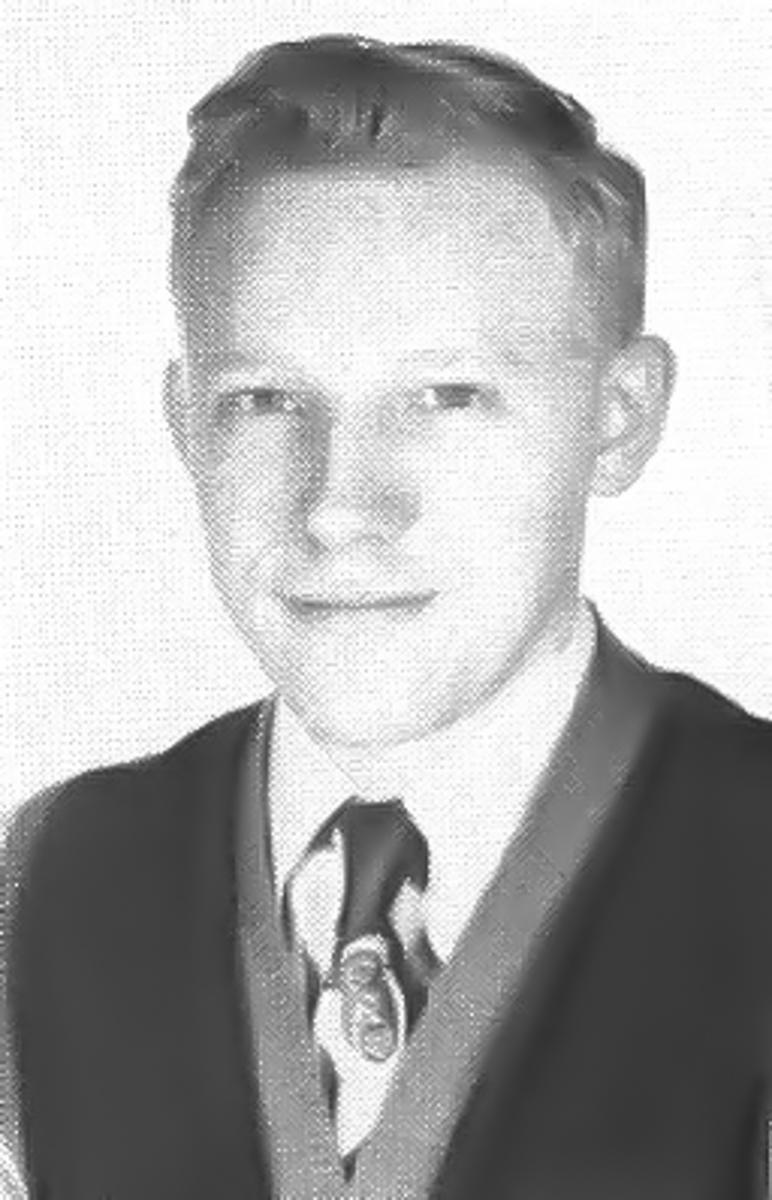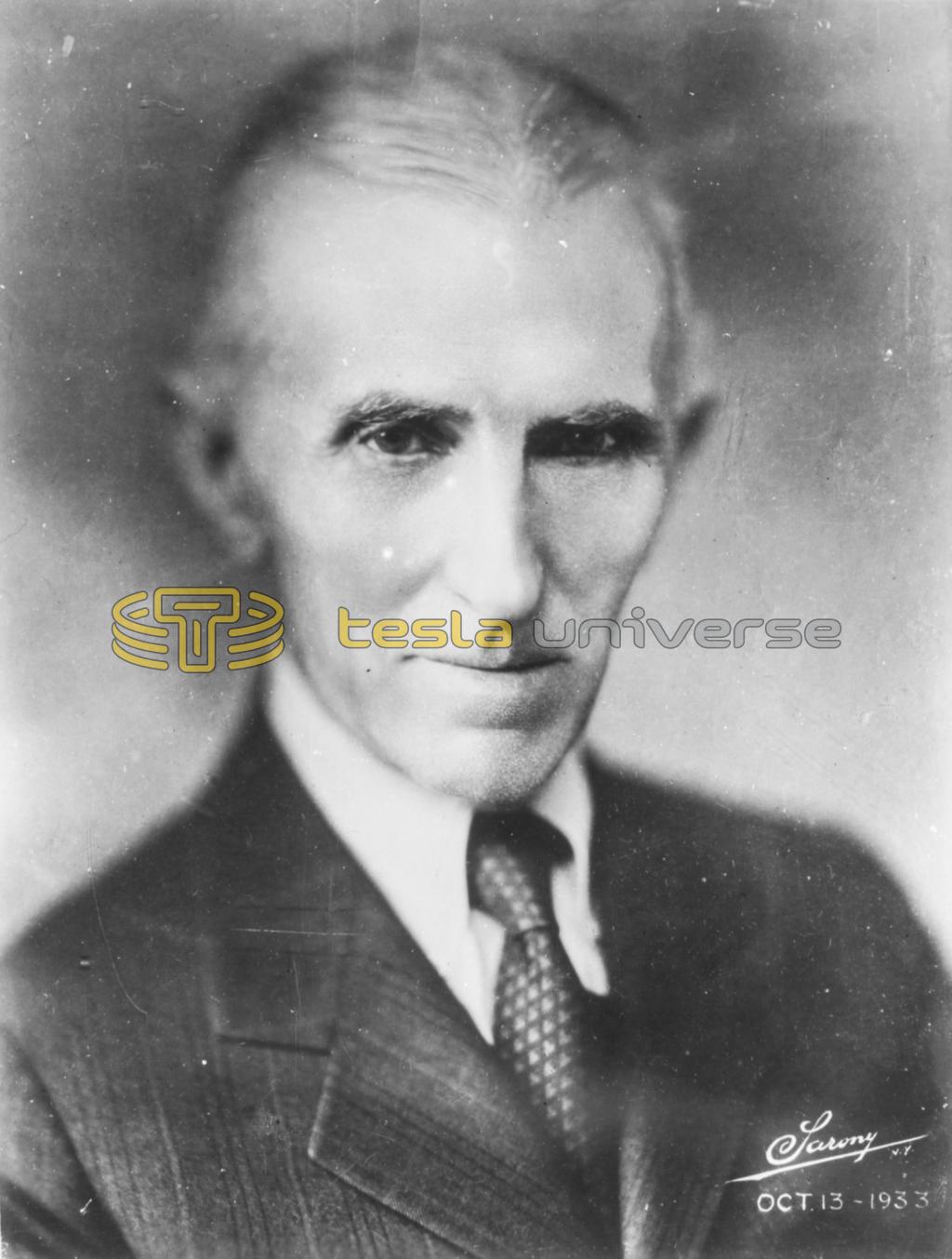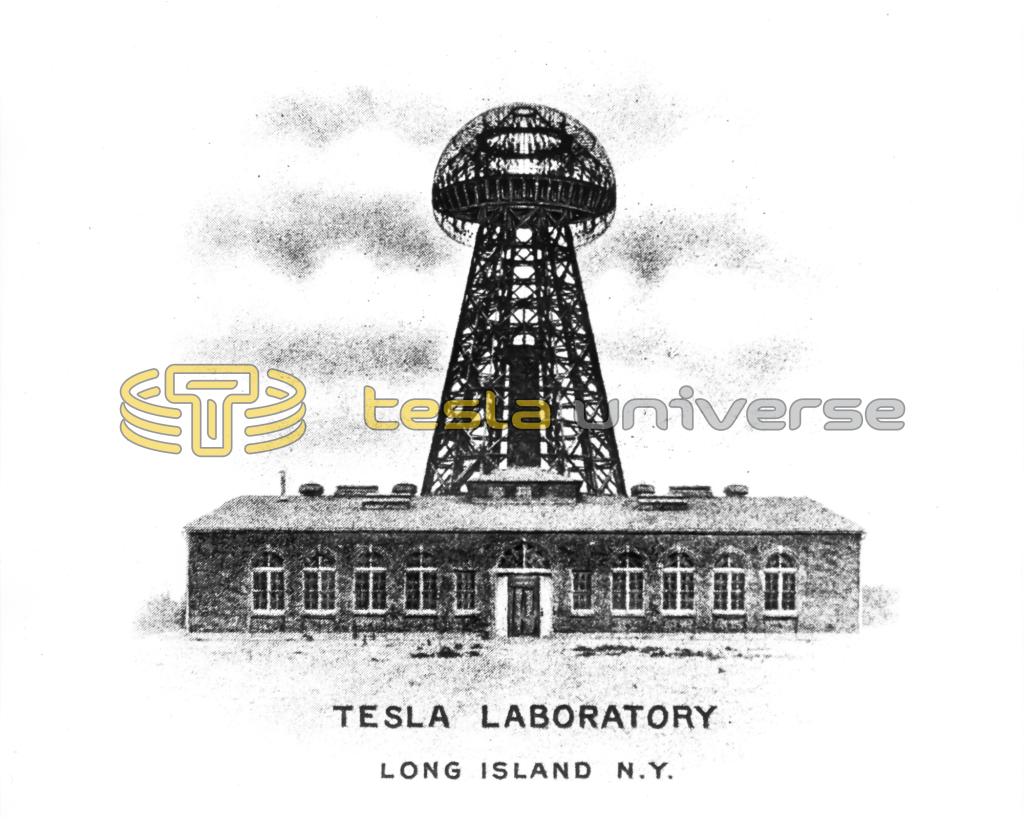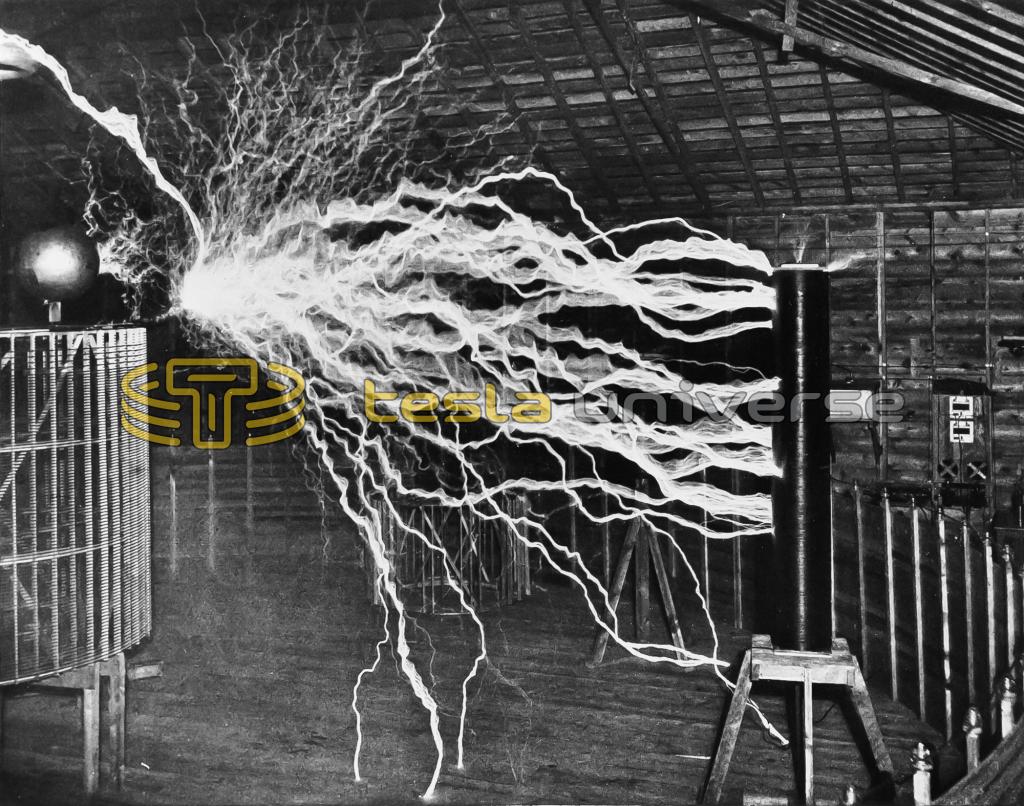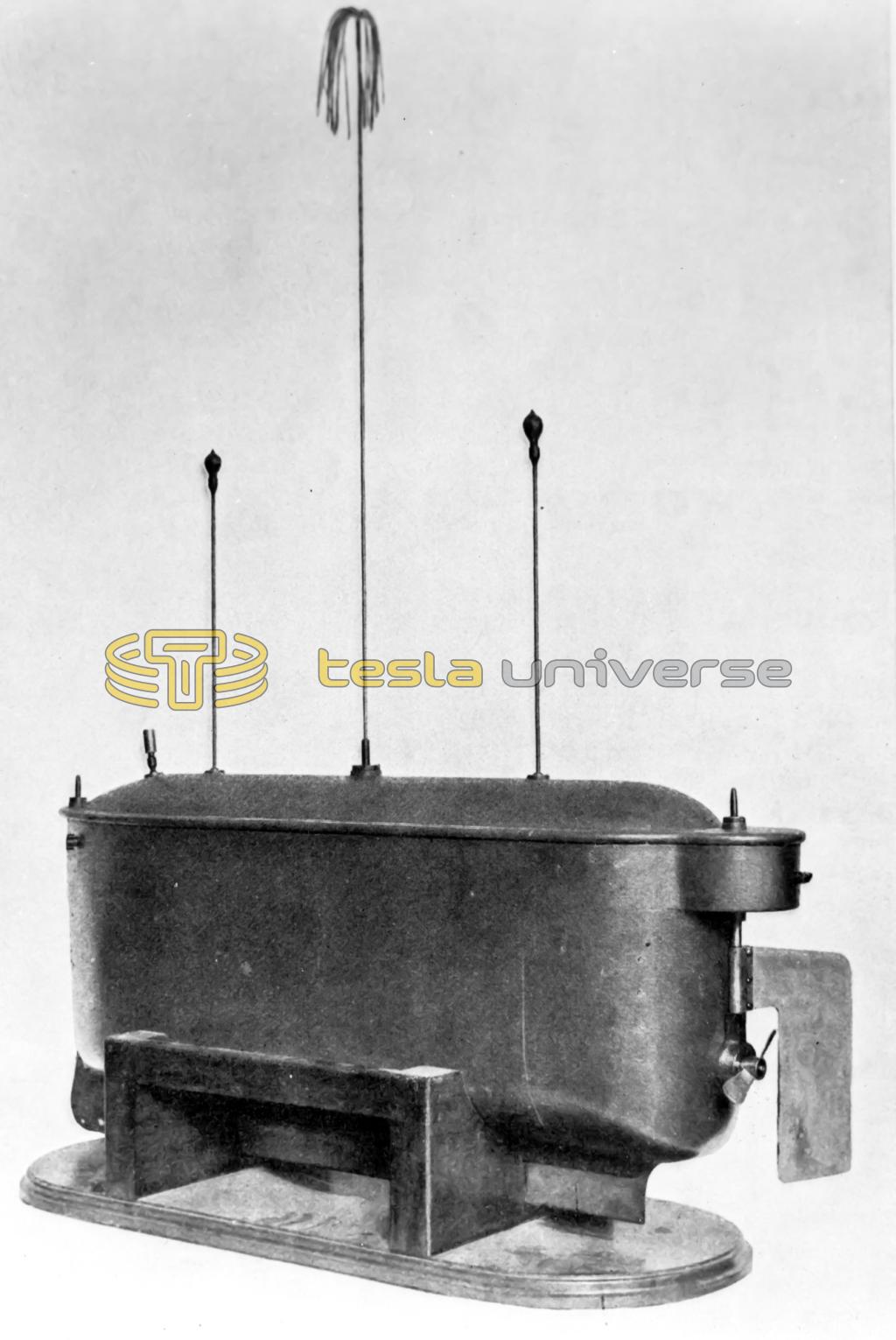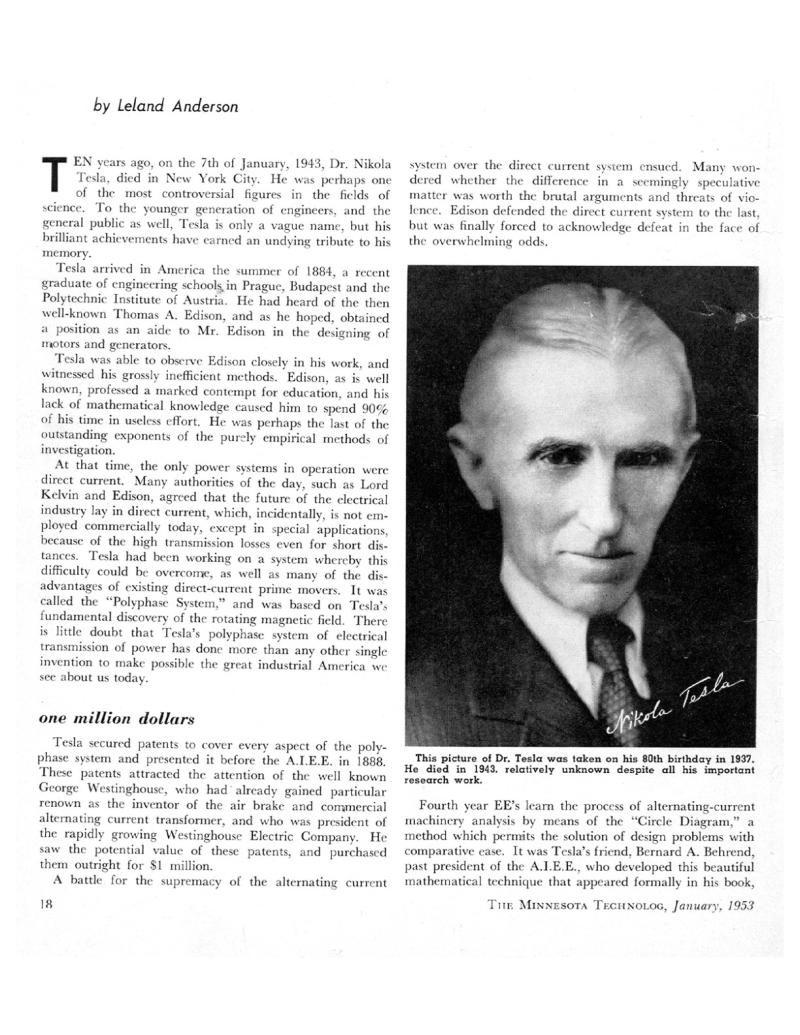
Nikola Tesla Articles
Dr. Nikola Tesla (Early Leland Anderson article)
Ten years ago, on the 7th of January, 1943, Dr. Nikola Tesla, died in New York City. He was perhaps one of the most controversial figures in the fields of science. To the younger generation of engineers, and the general public as well, Tesla is only a vague name, but his brilliant achievements have earned an undying tribute to his memory.
Tesla arrived in America the summer of 1884, a recent graduate of engineering schools in Prague, Budapest and the Polytechnic Institute of Austria. He had heard of the then well-known Thomas A. Edison, and as he hoped, obtained a position as an aide to Mr. Edison in the designing of motors and generators.
Tesla was able to observe Edison closely in his work, and witnessed his grossly inefficient methods. Edison, as is well known, professed a marked contempt for education, and his lack of mathematical knowledge caused him to spend 90% of his time in useless effort. He was perhaps the last of the outstanding exponents of the purely empirical methods of investigation. At that time, the only power systems in operation were direct current. Many authorities of the day, such as Lord Kelvin and Edison, agreed that the future of the electrical industry lay in direct current, which, incidentally, is not employed commercially today, except in special applications, because of the high transmission losses even for short distances. Tesla had been working on a system whereby this difficulty could be overcome, as well as many of the disadvantages of existing direct-current prime movers. It was called the "Polyphase System," and was based on Tesla's fundamental discovery of the rotating magnetic field. There is little doubt that Tesla's polyphase system of electrical transmission of power has done more than any other single invention to make possible the great industrial America we see about us today.
one million dollars
Tesla secured patents to cover every aspect of the polyphase system and presented it before the A.I.E.E. in 1888. These patents attracted the attention of the well known George Westinghouse, who had already gained particular renown as the inventor of the air brake and commercial alternating current transformer, and who was president of the rapidly growing Westinghouse Electric Company. He saw the potential value of these patents, and purchased them outright for $1 million.
A battle for the supremacy of the alternating current system over the direct current system ensued. Many wondered whether the difference in a seemingly speculative matter was worth the brutal arguments and threats of violence. Edison defended the direct current system to the last, but was finally forced to acknowledge defeat in the face of the overwhelming odds.
Fourth year EE's learn the process of alternating-current machinery analysis by means of the "Circle Diagram," a method which permits the solution of design problems with comparative ease. It was Tesla's friend, Bernard A. Behrend, past president of the A.I.E.E., who developed this beautiful mathematical technique that appeared formally in his book,
THE INDUCTION MOTOR AND OTHER ALTERNATING CURRENT MOTORS, THEIR THEORY AND PRINCIPLES OF DESIGN.
Tesla found it necessary to fight for his patent rights until their expiration against a host of false prior claims, and it is not surprising that his name has been lost during the struggle for court decisions which were, however, in every case adjudged in his favor.
Now that Tesla had money in his pocket, he found it possible to devote all his time to research. His high frequency and high voltage experiments attracted considerable attention, and he was urged to give a public demonstration of his results. He lectured at Columbia College in New York before the A.I.E.E. in 1891, and the following year in England where he appeared before the Institution of Electrical Engineers of which Professor Crookes was then president, and by special request at the Royal Institution. Tesla was persuaded to repeat his lecture-demonstrations in France before the Societe Internationale des Electriciens and the Societe Francaise de Physique. Returning again to America, Tesla gave the last lectures in this series before the Franklin Institute at Philadelphia and the National Electric Light Association at St. Louis. There, he was met with a thunderous ovation.
Tesla was the first to advocate the use of "Litzendraht," commonly called Litz wire, for use in high frequency circuits, and did so as early as 1892 when he stated, "Strands of very thin insulated wires properly interlaced would, of course, be the best to employ, but they are not to be had."
One cannot read today that classic of technical literature, THE INVENTIONS, RESEARCHES AND WRITINGS OF NIKOLA TESLA, published in 1894 and edited by T. C. Martin, past president of the A.I.E.E., without being impressed by the logic and insight, and fascinated by the beauty of the experiments described therein by Tesla. As early as this, Tesla clearly described the principles of high frequency resonate circuits, and presented the system of wireless transmission as we know it today. Tesla at this time was engaged in the development of his electro-mechanical isochronous oscillator, and the study of the effects of high frequency currents in lighting, X-ray, and cosmic radiation. He was the first to show that the E.M.F. series of metals is identical with their powers of X-ray reflection. Tesla later became very secretive about his activities, and made no statements concerning them without due caution.
In 1898 there were reports of a strange object seen moving about in the waters of New York Harbor and up the Hudson River. "What is it?" everyone asked. Their questions were soon answered in a formal statement from Tesla, with a public demonstration of the much talked about "object." It was a radio-controlled vessel which Tesla called a "telautomaton," the forerunner of our modern guided missiles. Everyone was much impressed, but it was too new too advanced and technical to be given the reception that Tesla had hoped, and unfortunately, passed into obscurity in its infancy, only to re-emerge many years later as a bold and revolutionary development.
It was in these years before 1900 that Tesla was granted patents on the basic elements and apparatus of radio transmission. The beginning of modern phototelegraphy was announced in 1904 when Tesla-currents were modulated by signals from a transmitting station in Germany for the reproduction of photographs. Although not well known in this country, Professor A. Slaby of Germany experimented in much the same lines as Marconi in Italy, but Professor Slaby was prompt to acknowledge Tesla as the real "Father of the Wireless." Marconi secured patents on his wireless system of transmission after 1900, and later brought suit against Tesla in an effort to establish a sweeping claim to all basic wireless patents. Because Tesla could not make the court understand the technical differences between long and short wave transmission, he lost the decision, despite the fact that his patents were upheld in Europe.
A friendly, industrious lad is Leland Anderson, a double "E" student with great ability for sleuthing out little known facts, be they concerned with man or machine. Leland wants to make like Sherlock Holmes in the "EE" field, and if he doesn't change his mind and go on to grad school he will go to work as a research scientist when he graduates in the fall of '53 or Jan. '54. Music is a sideline for Leland but electronics is his main interest and he is a member of the AIEE and the IRE.
In the summer of 1899, Tesla went to Colorado Springs and established an experimental station where he would be free to perform experiments of a nature not possible in his New York City laboratory. The experimentation station was topped with towering masts, and contained some very powerful apparatus, the most important of which was a huge oscillator, or "magnifying transmitter." With this device, Tesla was able to produce electrical discharges nearly 200 ft. in length the nearest approach to natural lightning that has yet been made by man! Currents in the secondary of the oscillation transformer reached 1,100 amp at 12 million volts.
When the oscillator was in operation, the thunderous roar of its discharge could be heard over 10 mi. away. The electrical activity was so great that a continuous stream of sparks could be seen to pass between grains of sand in the ground at night. In the center of the oscillator's large arena, butterflies were helplessly carried around in a circle as if caught in a gale, although no wind existed. What is most important over all these spectacular terrestrial effects, is the fact that Tesla succeeded in transmitting electrical energy through the earth without wires not mere signals, but actual energy to operate power consuming devices.
Tesla's tower
Returning to New York in 1900, Tesla embarked on a fabulous undertaking aided financially by J. P. Morgan. A huge tower built entirely of massive wooden timbers and reaching a height of 187 ft. was erected on Long Island. The "tower" was surmounted by a copper-ribbed terminal 65 ft. in diameter. Nearby, an immense laboratory-power plant was constructed. Tesla intended to use this Long Island plant to demonstrate the practicability of the wireless transmission of power to any point on the globe. There were technical delays in the manufacture of necessary machinery, and money was running short. Those who had invested in the project were impatient for results, and when they did not come, lost faith. Tesla suffered a loss in prestige, and was unable to secure needed funds for the experiment's completion. The tower, an architectural masterpiece, stood on Long Island for many years, but because of war conditions in 1917, it was destroyed.
Tesla stated that the world was not yet ready for his invention - it was too far ahead of time. "The world moves slowly, and new truths are difficult to see."
new style turbine
Some years later, Tesla directed his efforts toward the development of a revolutionary type of turbine. The "Tesla Turbine" is a radical departure from all of its predecessors and presently existing types, and possesses many outstanding advantages, namely: simplicity of construction - no complex blading or delicate balancing requirements, greatly reduced size per brake horsepower rating, and ease of reversibility. The principle of operation is dependent upon two salient properties of fluids, adhesion and viscosity. The fluid is caused to move in natural stream lines of least resistance free from constraint and obstruction, the torque being developed by a gradual change of velocity of the fluid's spiral path through the rotor. Some models of the Tesla Turbines have reached speeds in excess of 16,000 R.P.M.
In a recent performance analysis of the Tesla Turbine completed in June 1952 by James H. Armstrong, M.S., of the Georgia Institute of Technology, it was stated that "Tesla's turbines were never developed commercially, ap46 parently because of professional jealousies on the part of other engineers and designers, as well as Tesla's lack of sufficient funds to finance them himself." Mr. Armstrong strongly recommends "that further investigations be made in the hope of developing Tesla turbines which may eventually replace bladed turbines in many applications."
the later years
Tesla's research activities of later years stagger the imagination in their scope. He issued statements regarding the development of interplanetary power transmission systems, absolute defense networks, and of the discovery of new sources of energy. He succeeded in transforming a column of gas into a rigid body by application of electric currents in a certain manner, and in producing concentrated beams of high energy. His death intestate at the age of 86, in 1943, prevented his later discoveries from reaching the world, but his research studies that have remained under lock and key for the past years are soon to be examined.
The life portrait of Dr. Tesla shows him alone in a world far behind his conception of it, surrounded by those who misunderstood him and criticized by those who have been blessed with better judgment. "Monuments to the great inventive genius that was Tesla's might be sufficient to fill the world with fame of his name, and it must be recorded that such would be the case had it not been for world's usual ingratitude toward its benefactors." - end
